11 Nights / 12 Days
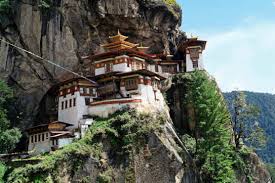
Nepal is truly a land of breathtaking beauty and innumerable attractions. This beautiful country is home to eight of the ten highest mountains in the world, including Mount Everest - the world’s highest mountain peak.
Bhutan is a tiny country in the Himalayas and the only Buddhist Country in the world, which still preserves cultural, tradition and gives a strong inspiration in all aspects of life.
Due to its unspoiled atmosphere and tuneful society, the tiny Kingdom of Bhutan has been called "The Last Shangri-LaInternational airfare, visa fees, driver / guide gratitude;
Any personal nature expense and any service not mentioned under "The Package Includes" head
Upon arrival at Kathmandu, meet and great by our representative and get transfer to the hotel for check-in
Kathmandu: The Kathmandu Valley, the political, commercial and cultural hub of Nepal, is the first for the majority of visitors to Nepal. Once a separate kingdom in itself, it contains three fabled cities – Kathmandu, Patan and Bhaktapur. Each is an artistic exposition of graceful temples, elegant palaces, brick paved courtyards and quaint streets.
Afternoon leave to visit Hanuman Dhoka (Durbar Square), Built between the 12th and the 18th centuries, this complex of palaces, courtyards and temples is the historic seat of royalty. It used to be the seat of ancient Malla kings of Kathmandu. The durbar Square, protected as a UNESCO World heritage site, epitomizes the religious and cultural life of the people. Other than a 17th - century stone inscription set into the wall of the palace with writings in 15 languages, interesting things to see here are: Taleju Temple (Built by King Mahendra Malla in 1549 A.D., Kal Bhairav, the god of Destruction Nautalle Darbar, Coronation Nasal Chowk, the Gaddi Baithak, the statue of king Pratap Malla, the big bell, big drum, the Jagannath Temple and three museums including the numismatic museum and the Tribhuvan Museum. Swayambhunath (Samhengu): Listed as a world heritage site, this is one of the world's most glorious Buddhist sites in Nepal. Its established is linked to the creation of the Kathmandu Valley out of a primordial lake. Three km west of Kathmandu this site is situated on a hillock about 77 m. above the valley. Painted on the four-sides of the spire bases are the all seeing eyes of Lord Gautam Buddha, the founder of Buddhism.
Overnight stay at the hotel.
After breakfast leave to visit Pashupatinath Temple, Boudhnath Stupa and Patan City.
Pashupatinath : Situated five kilometers east of Kathmandu on the bank of sacred Bagmati river, the stemple of lord Shiva Pashupatinath with two tiered golden roof and silver doors is famous for its super architecture. It is a centre of annual pilgrimage on the day of Maha Shivratri. Entrance to the temple precinct is permitted to the Hindus only however, visitors can clearly see the temple and activities performed in the temple premises from the eastern bank of the Bagmati river.
Boudhanath: Boudhanath is among the largest stupas in South Asia, and it has become the focal point of Tibetan Buddhism in Nepal. The white mound looms thirty-six meters overhead. The stupa is located on the ancient trade route to Tibet, and Tibetan merchants rested and offered prayers here for many centuries. When refugees entered Nepal from Tibet in the 1950s, many of them decided to live around Bouddhanath. They established many gompas, and the "Little Tibet" of Nepal was born. This "Little Tibet" is still the best place in the Valley to observe Tibetan lifestyle. Monks walk about in maroon robes. Tibetans walk with prayer wheels in their hands, and the rituals of prostration are presented to the Buddha as worshippers circumambulate the stupa on their hands and knees, bowing down to their lord.
Many people believe that Bouddhanath was constructed in the fifth century, but definite proof is lacking. The stupa is said to entomb the remains of a Kasyap sage who is venerable both to Buddhists and Hindus. One legend has it that a woman requested a Valley king for the donation of ground required to build a stupa. She said she needed land covered by one buffalo's skin and her wish was granted by the King. She cut a buffalo skin into thin strips and circled off a fairly large clearing. The king had no choice but to give her the land.
The Bouddha area is a visual feast. Colorful thangkas, Tibetan jewellery, hand-woven carpets, masks, and khukuri knives are sold in the surrounding stalls. Smaller stupas are located at the base. Gompa monasteries, curio shops, and restaurants surround Bouddhanath. Conveniently situated restaurants with roof-top patios provide good food and excellent views of Bouddhanath.
Patan: Durbar Square, Situated I the heart of the city, constitutes the focus of visiorts; attraction. The Square is full or ancient places, temples and shrines, noted for their exquaisite carvinge. The Patan Durbar Square consists of three main chowk an Keshar Narayan Chowk. It was listed in the UNESCO World Heritage Monument List in 1979. Patan Museum:- This museum indside the Durnbar Square specializes in bronxze statues and religious objects. Krishna Mandir:- Built in 1637 AD, the temple of Lord, Krishan holds a commanding position in the palace complex of Patan, Tibetan Refugee Camp: This camp was set up in 1960 under the initiative of the International Red Cross & the Swiss Development Corporation in corporation with HMG of Nepal. Its main objective is to help the Tibetan Refugees to do something nice & support themselves & some carpet industries & handicrafts have been operating.
Overnight stay at the hotel.
After breakfast at hotel proceed to the tranquil valley so called Pokhara. Upon arrival get transfer to hotel, refresh & relax with the spectacular panorama of Annapurna range forming the backdrop.
Stretching from the east to west, the Annapurna massif includes Annapurna I to IV and Annapurna South. Although the highest among them is Annapurna I (8091m), it is Machhapuchhre (the fishtail), which dominates all others in this neighborhood. Boastfully levitating in the skyline, the fish-tailed pinnacle is the archetypal snow-capped, needle-pointed mountain.
Pokhara: Pokhara is a remarkable place of natural beauty. Situated at an altitude of 827m from the sea level and 200km west of Kathmandu valley, the city is known as a center of adventure. The enchanting city with a population of around 95,000 has several beautiful lakes and offers stunning panoramic views of Himalayan peaks. The serenity of lakes and the magnificence of the Himalayas rising behind them create an ambience of peace and magic. It is part of a once vibrant trade route extending between India and Tibet. To this day, mule trains can be seen camped on the outskirts of the town, bringing goods to trade from remote regions of the Himalaya. This is the land of Magars and Gurungs, hardworking farmers and valorous warriors who have earned worldwide fame as Gurkha soldiers. The Thakalis, another important ethnic group here, are known for their entrepreneurship. The climate of Pokhara is slightly warmer than Kathmandu with daytime temperature hovering around 15 degrees Celsius in winter and 35 degrees in summer. The monsoon season which lasts from mid-June to mid-September is very wet; in fact Pokhara records the highest rainfall in the country.
Overnight will be in Pokhara.
Early morning excursion to visit Sarangkot has great views in all four directions, Pokhara below, The Annapurna Range including its highest peaks, Rolling Hills off to the sunset and a rural lanscape out along the ridge road. This is a most popular spot for sunrise watchers who come up in the morning and head back to Pokahara
Afternoon visit Pokhara city where is beautiful lake like Begnesh, Rupa and fewa Pokhara museum cave davit fall, Bindebashini Temple and Seti Gorge.
Barahi Temple, The Barahi Temple is the most important monument in Pokhara. Built almost in the Center of Phewa Lake, this two-storied pagoda is dedicated to the boar manifestation of Ajima, the protester deity representing the female force Shakti.
Bindhyabasini Temple, This is one of the oldest temples in Pokhara. Legend says that when Pokhara was a part of Kaski Kingdom, the main deity of the temple, Goddess Durga, was brought from India. Apart from the peace and tranquility that can be felt in this region, the premises of the temple offers a good view of the Himalaya on a clear day. The temple is in the area of the Bazaar; hence, a journey of the old bazaar can be combined with a visit to the temple.
Devis Fall. Davis Fall is the most famous water fall in Pokhara, which comes to its gushing best just before disappearing underground.
Seti Gandaki / Gorge: Seti Gandaki and Seti Gorge are other two important places to visit in Pokhara. The Seti gandaki flows right through the city, it runs completely underground at many places. There is a local myth that the entire land of Pokhara floats on the Seti River. Overnight stay at the hotel.
Early morning, see sunrise and after breakfast, drive to Kathmandu, on arrival check-in to the hotel. Enroute visit Bhaktapur City.
Bhaktapur: Situated at an altitude of 1,401 m, Bhaktapur covers an area of four square miles. Bhaktapur or "the City of Devotees" still retains the medieval charm and visitors to this ancient town are treated with myriad wonders of cultural and artistic achievements. The past glory of the Malla rulers continue to be reflected at the Durbar Square. Pottery and weaving are its traditional industries. The city lies about 14 km east of Kathmandu Bhaktapur Durbar square, the city contains many temples and other architectural showpieces like lion gate, statue of King Bhupatindra Malla, Picture gallery, the golden gate, the palace of 55 windows, batsala temple and bell of barking dogs, the replica of Pashupatinath temple.
Arrive Kathmandu and check-in to the hotel. Rest of the day free to enjoying panoramic view of Kathmandu valley. Overnight stay at the hotel.
The flight into Bhutan takes you over the great Himalayas, offering the scintillating scenery of the world's highest glacial peaks.
As you enter Paro valley, you will see the silvery Pa Chu (Paro River) meandering down the valley, the Paro Dzong (fortress) and Ta Dzong (watch tower).
On arrival in Paro you will be received by our representative and will be driven to Thimpu (01 hrs approx). En route visit Simtokha Dzong, the oldest fortress of the Kingdom which now houses the School for religious and cultural studies.
Thimpu: There are a good many things to see in the capital which has a very relaxed, laid-back feel about it. Thimphu is relatively small having a population of approximately 90,000 people and the streets are wide and tree lined
Evening free at leisure. Overnight stay at the hotel.
In the morning you will visit the Late King’s Memorial Chorten, the National Library, the indigenous hospital specializing in herbal medicine, handmade paper factory, and the nunnery at Zilukha.
In the afternoon, tour of the school of fine arts where young students learn the traditional arts and crafts (Zo Rig Chusum – the thirteen crafts); Zangtopelri Lhakhang, the Handicraft Emporium and the local handicraft centers to see the varieties of textiles, thangkha paintings, masks, jewellery etc. on display. Overnight stay at hotel.
In the morning we drive to Punakha (3 hrs approx), the old winter capital. Leaving Thimphu the road climbs via a series of zigzags over the Dochu La Pass, 10,000ft/3,048m. On a clear day panoramic views can be had of the eastern Himalaya, including Bhutan's highest mountain, Gangkar Punsum, 24,770ft/7,550m. The road drops down through varied forest finally emerging into the highly-cultivated Punakha valley.
In the afternoon hike to Chimi Lhakhang, the divine mad monk’s temple. It is a beautiful walk through a lovely village. The temple can be visited and there is a tree outside which is supposed to have sprouted up after Drukpa Kunley sent a thunderbolt from an adjoining valley to kill some evil spirits who had gathered at the site.
Also visit the courtyard of Punakha Dzong. Overnight stay at the hotel.
After breakfast drive (3 & ½ hrs approx) to Paro via Thimpu.
Upon arrival check-in at the Hotel. Evening free at leisure. Overnight at Hotel.
Today you will visit Ta Dzong (Sun, Mon Govt holiday closed): once a watchtower, built to defend Rinpung Dzong during inter-valley wars of the 17th century, Ta Dzong was inaugurated as Bhutan's National Museum in 1968. It holds fascinating collection of art, relics, religious thangkha paintings and Bhutan's exquisite postage stamps. The museum circular shape augments its varied collection displayed over several floors.
Afterwards, walk down a hillside trail to visit Rinpung Dzong, which has a long and fascinating history. Built in 1646 by Shabdrung Ngawang Namgyal, the first spiritual and temporal ruler of Bhutan, the Dzong houses the monastic body of Paro, the office of the Dzongda (district administrative head) and Thrimpon (judge) of Paro district. The approach to the Dzong is through a traditional covered bridge called Nemi Zam. A walk through the bridge, over a stone inlaid path, offers a good view of the architectural wonder of the Dzong as well as life around it. It is also the venue of Paro Tshechu, held once a year in the spring. Overnight stay at hotel.
This day you will do excursion to Tiger's Nest.
Taktshang or 'Tiger's Nest' as it is often referred to for Taktshang Pelphung monastery, is one of the most venerated and famous of Bhutan's monasteries. It is located on the face of a 900m sheer cliff. It is an impressive and unmissable site, but accessible only by walk or to ride mules/pony. From the trail head at Rumtokto (2600m), the walk till the Cafeteria is a steep one hour uphill (about 350m ascent). From the Cafeteria (2940m), one can get a good close-up view of Taktshang. Savor views of the monastery over a well deserved cup of tea and biscuits at the cafeteria and continue uphill for another 45 minutes to a high observation point (3140m) where there is a Chorten. From this vantage point, the lookout to the monastery is a very spectacular and seems almost close enough to touch. It is now on the other side of a deep chasm, only around 150m away as bird flies, but takes half hour or even more to reach. Continue down the flight of cliff-hanging steps on the narrow trail to a beautiful waterfall that plunges down the deep chasm and alongside is a retreat hermitage, jammed dramatically into a rock crevice. Then climb up the flight of steep steps to the monastery. At any point on this walk, you can always return if you find it too difficult. Once inside the monastery, there are several shrines or temples with few monks in residence. After visiting Taktshang monastery's many shrines, most tours schedule lunch at the Cafeteria upon return. After lunch, retrace back to the road-head where you started in the morning. The return from Cafeteria is all downhill and takes just over half hour. Further, if you have more time, energy and ready for more challenging day, you can start early and trek beyond Takstang to see several monasteries, temples, retreat houses in the surrounding area. The most notable among them are Zangdopelri and Ugyen Tsemo. Pony/horse can be hired for ride up till the Cafeteria. However you cannot ride beyond the cafeteria or come down hill on the horse. According to the legend, Guru Padmasambhava or Guru Rinpoche, who spread the Buddhism across the entire Himalayas is said to have flown here in the 8th century on the back of a Tigress, in order to subdue negative spiritual forces that were hostile to spread of Buddhism. In 853, one of his students, Pelgyi Senge mediated here in the main cave. The stupa inside one of the temples contains his mortal remains and therefore the cave is known as 'Pelphung or Pelgi's cave'. Subsequently many great spiritual masters such as Milarepa, Thangthong Gyalpo, Phajo Dugom Zhigpo, Shadrung and many others, passed periods here in profound meditation. In 1692, Tenzin Rabgye built a two storey temple around what little may have existed previously. This was expanded and refurbished many times over the period of time. Taktshang and several temples in the area were burnt down in 1951 by fire accident but much of them remained intact and most of the relics were saved. Soon after, the, Taktshang was rebuilt by population of Tsento village. Again in April of 1998, a major fire destroyed the main structure of the building and its contents (some believe it to be arson). Reconstruction began in 2000 and was completed and consecrated after extensive efforts and financial support of Governments as well as donors.
Kichu Lhakhang: Kyichu is one of the oldest temples in Bhutan built in the 7th century by Tibetan King Songtsen Gampo. The story goes that a giant demoness lay across Tibet and the Himalayas, which was preventing the spread of Buddhism. To overcome her, King Songtsen Gampo decided to build 108 temples in a single day to pin the ogress to the earth forever in 659AD. Of these 108 temples, 12 were built in accordance with precise plans at key points. The temple of Jokhang in Lhasa was built over the very heart of the demoness and Kichu is said to have been built on the left foot.
Overnight stay.
After breakfast get transfer to Paro Airport to connect departure flight.
Founded in 2003 in New Delhi, India, A G Tours Pvt. Ltd. is a travel management company, offering extensive tour packages for the Indian subcontinent. Recognized by the Ministry of Tourism, Read More...
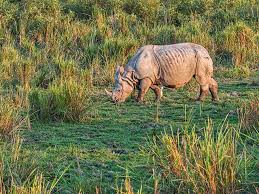 4D/3N
4D/3N
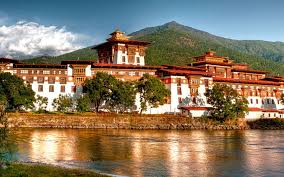 7D/6N
7D/6N
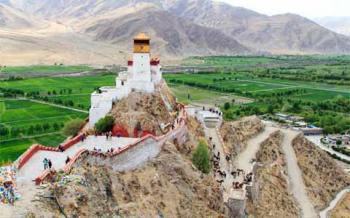 15D/14N
15D/14N
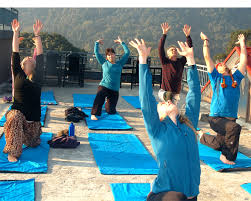 8D/7N
8D/7N
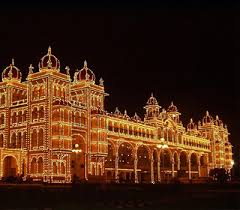 20D/19N
20D/19N
20 Days Grand South India Tour
Chennai - Mahabalipuram - Thanjavur - Trichy - Bangalore - Hassan - Pondicherry
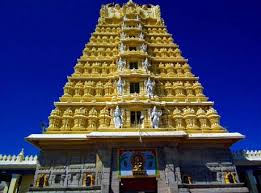 10D/9N
10D/9N
10 Days South India Pilgrimage Tour
Chennai - Tirupati - Kanchipuram - Mahabalipuram - Pondicherry - Trichy - Thanjavur..
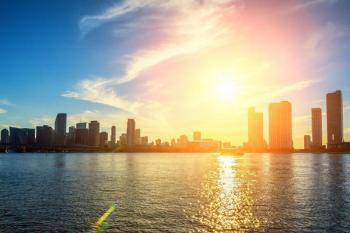 12D/11N
12D/11N
Munnar - Alleppey - Bangalore - Mysore - Ooty - Kovalam
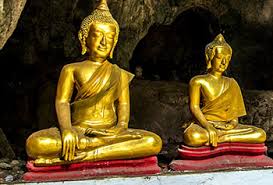 15D/14N
15D/14N
15 Days North India & Buddhism Tour
New Delhi - Jaipur - Bharatpur - Agra - Lucknow - Kushinagar - Vaishali - Patna - B..
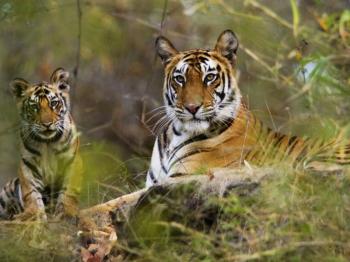 16D/15N
16D/15N
16 Days The Best of Indian Wildlife Tours
New Delhi - Jaipur - Ranthambore - Bharatpur - Fatehpur Sikri - Bandhavgarh - Mandla
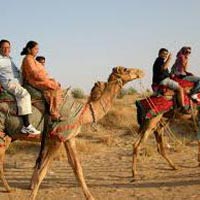 12D/11N
12D/11N
Camel Safari in Rajasthan Tour
New Delhi - Jodhpur - Jaisalmer - Ranakpur - Udaipur
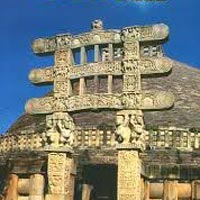 12D/11N
12D/11N
Back to Madhya Pradesh Tour (Central Ind..
Gwalior - Jhansi - Jabalpur - Bhopal - Tikamgarh - Chhatarpur - Kanha - Pachmarhi
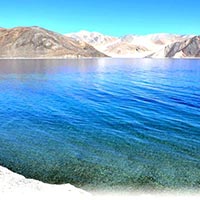 12D/11N
12D/11N
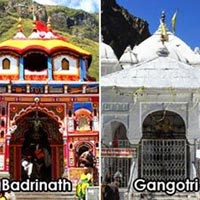 12D/11N
12D/11N
Chardham Yatra (Ex Delhi) 11 Nights / 12..
Haridwar - Garhwal - Uttarkashi - Rudraprayag - Chamoli - Rishikesh
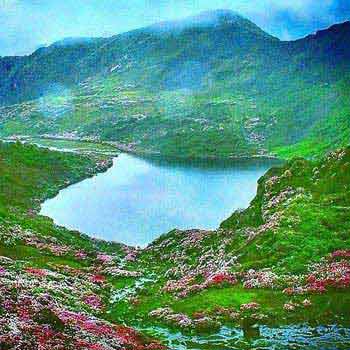 12D/11N
12D/11N
Guwahati - Kaziranga - Shillong - Tawang - Cherrapunji - Bomdila - Bhalukpong
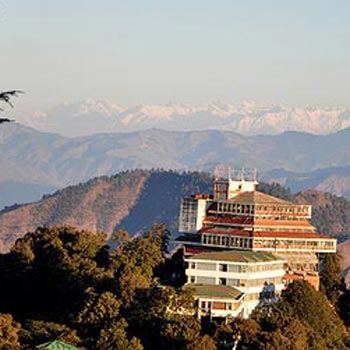 12D/11N
12D/11N
11nights/12days Himachal Punjab Romantic..
Chandigarh City - Shimla - Manali - Dharamshala - Dalhousie - Amritsar - Ludhiana -..
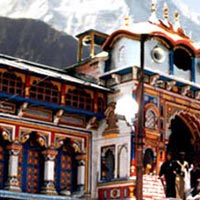 12D/11N
12D/11N
Haridwar - Rishikesh - Uttarkashi - Rudraprayag - Chamoli - Joshimath - Srinagar - ..
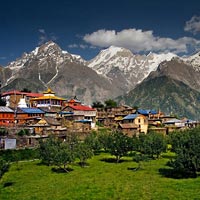 12D/11N
12D/11N
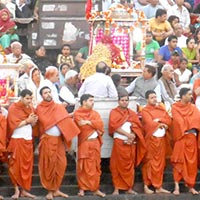 12D/11N
12D/11N
Haridwar - Rudraprayag - Rishikesh - Uttarkashi - Chamoli - Gangotri
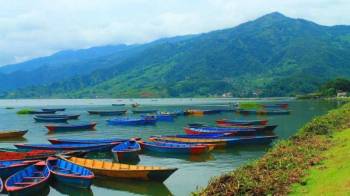 12D/11N
12D/11N
11 Nights - 12 Days Nepal Tour From Gora..
Prayagraj - Gorakhpur - Varanasi - Ayodhya - Kathmandu - Pokhara - Chitwan - janakpur
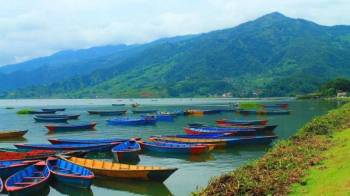 12D/11N
12D/11N
11 Nights - 12 Days Nepal Tour From Gora..
Prayagraj - Gorakhpur - Varanasi - Ayodhya - Kathmandu - Pokhara - Chitwan - janakpur
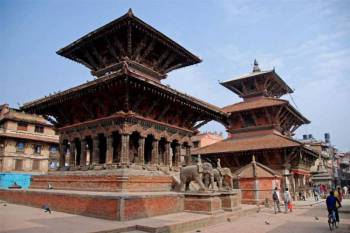 12D/11N
12D/11N
11 Nights - 12 Days Nepal Tour Package - 2
Prayagraj - Gorakhpur - Varanasi - Ayodhya - Kathmandu - Pokhara - Chitwan - janakpur
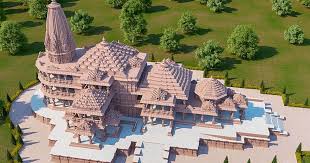 12D/11N
12D/11N
Prayagraj - Varanasi - Bodhgaya - Ayodhya - Pokhara - Chitwan - Parsa
 8D/7N
8D/7N
8D Kathmandu - Chitwan - Pokhara - Lumbi..
Kathmandu - Pokhara - Lumbini - Chitwan - janakpur
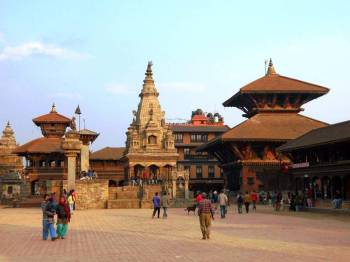 3D/2N
3D/2N
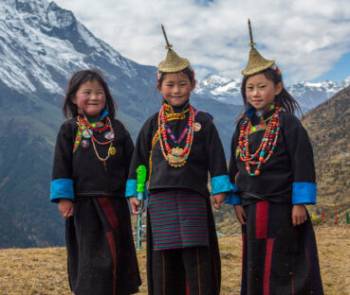 5D/4N
5D/4N
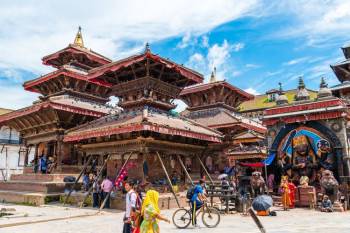 6D/5N
6D/5N
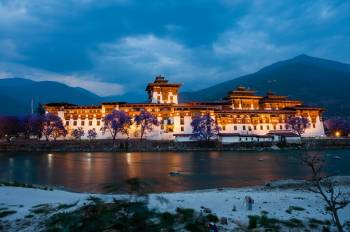 7D/6N
7D/6N
6 Nights/ 7 Days - Bhutan Happiness Tour
Punakha - Bumthang - Paro - Thimphu - Phobjik